
Though small in absolute diversity of genera, the Hemitheini are nonetheless the largest tribes of geometer moths in the subfamily Geometrinae. Like most Geometrinae, they are small greenish "emerald moths". The tribe was first described by Charles Théophile Bruand d'Uzelle in 1846.
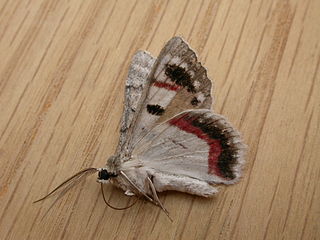
Crypsiphona ocultaria the red-lined looper moth or red-lined geometer, is a moth of the family Geometridae. The species was first described by Edward Donovan in 1805 and it is found in Australia.
Absala is a monotypic moth genus in the family Geometridae. It consists of only one species, Absala dorcada, which is found in China, India, Thailand and Vietnam. Both the genus and species were first described by Charles Swinhoe in 1893.
Actenochroma is a genus of moths in the family Geometridae. It consists of only one species, Actenochroma muscicoloraria, which is found in Brunei, China, India, Indonesia, western Malaysia and Nepal.
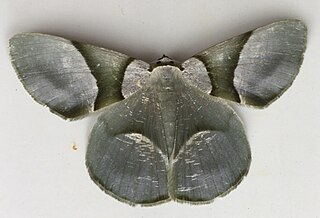
Calleremites is a monotypic moth genus in the family Geometridae. Its only species, Calleremites subornata, is found in China, Sikkim in India and Myanmar. Both the genus and species were first described by William Warren in 1894 and it has only been seen three times since then, the latest in a forest in northern Myanmar.
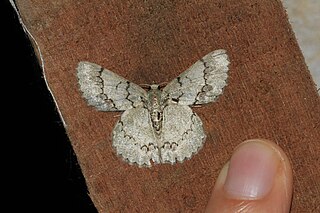
Epipristis is a genus of moths in the family Geometridae erected by Edward Meyrick in 1888.
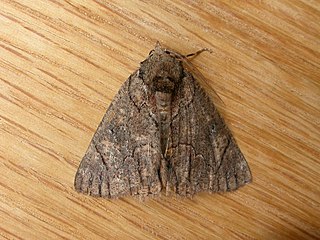
Heliomystis is a monotypic moth genus in the family Geometridae. Its only species, Heliomystis electrica, the electric moth, is found in the southern half of Australia. Both the genus and species were first described by Edward Meyrick in 1888.
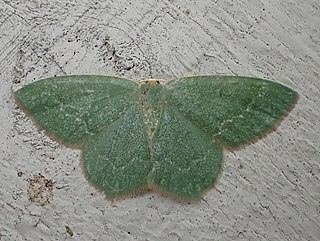
Thalera pistasciaria is a species of moth in the family Geometridae. It was first described by Achille Guenée in 1857 and has been found in eastern and central North America from Nova Scotia to Manitoba, and south to South Carolina and Alabama.

Thalera is a genus of moths in the family Geometridae erected by Jacob Hübner in 1823.

Sterrhinae is a large subfamily of geometer moths with some 3,000 described species, with more than half belonging to the taxonomically difficult, very diverse genera, Idaea and Scopula. This subfamily was described by Edward Meyrick in 1892. They are the most diverse in the tropics with the number of species decreasing with increasing latitude and elevation.

Scopulini is a tribe of the geometer moth family (Geometridae), with about 900 species in seven genera. The tribe was described by Philogène Auguste Joseph Duponchel in 1845.
Dindica virescens is a moth of the family Geometridae first described by Arthur Gardiner Butler in 1878. It is found in Japan.
Herochroma elaearia is a moth of the family Geometridae, first described by George Hampson in 1903. It is found in Sikkim, India.
Herochroma nigrescentipalpis is a moth of the family Geometridae first described by Louis Beethoven Prout in 1916. It is found on Sulawesi.
Herochroma mansfieldi is a moth of the family Geometridae first described by Louis Beethoven Prout in 1939. It is found in Yunnan and Hubei, both in China.
Herochroma usneata is a moth of the family Geometridae first described by Felder and Rogenhofer in 1875. It is found in northern India.

Holoterpna pruinosata is a moth of the family Geometridae first described by Otto Staudinger in 1898. It is found in Italy, North Macedonia, Turkey, the Levant and possibly western Iran.
Pachyodes haemataria is a moth of the family Geometridae first described by Gottlieb August Wilhelm Herrich-Schäffer in 1854. It is found in India.
Aeolochroma saturataria is a moth of the family Geometridae first described by Francis Walker in 1866. It is found in Australia.
Aeolochroma acanthina is a moth of the family Geometridae first described by Edward Meyrick in 1888. It is found in Australia.









